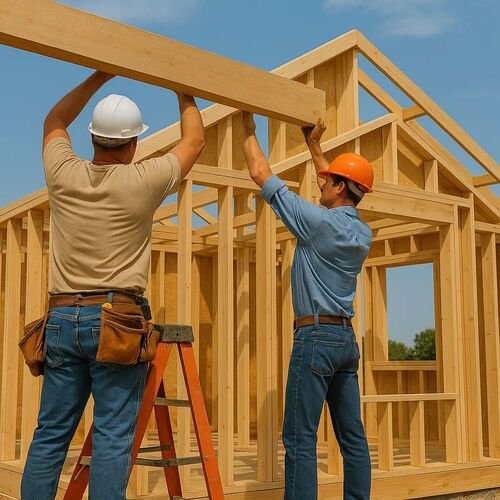Transforming a vintage building into a contemporary office space can be a deeply rewarding project that breathes new life into a historical structure and creates a unique environment for modern work. The task, however, comes with its own set of challenges, from maintaining the building’s integrity to equipping it with the latest technological advancements. Keep reading for insightful tips that will help you turn a drab, old building into a fab, chic office space.
Assessing the Potential of Your Vintage Building for a Modern Office Space
Before diving into renovations, it’s imperative to thoroughly assess the structural integrity and architectural features of your vintage building. Have a professional evaluate the foundation, roofing, electrical systems, and plumbing to ensure they can withstand a modern office’s demands or be upgraded accordingly.
Consider the layout and space distribution of the vintage property. Assess whether the existing floorplan can accommodate an open office layout or if it requires reconfiguration for private offices and meeting spaces. Take note of natural light sources, as these can reduce energy costs and create a pleasant work environment.
Uncover the vintage charms that can be preserved or accentuated during the renovation. Features like original wood floors, exposed brick walls, or intricate moldings can provide character to your office and serve as focal points. Proper antique wood restoration can revive the luster of old timber, turning it into an elegant asset in your revamped space.
Blending Old Charm With New Functionality in Office Design
An effective office transformation merges the charm of the past with the conveniences of the present. As you plan the design, strive to maintain the building’s unique architectural details while incorporating modern amenities.
Functionality is just as important as aesthetics. Ensure that modern necessities like high-speed internet, efficient heating and cooling systems, and contemporary lighting are part of the design process. Cleverly integrate these elements without compromising the building’s character.
The office furniture selected should reflect the blend of old and new as well. Consider custom pieces that resonate with the building’s era while offering modern comfort and ergonomics. Additionally, incorporating green elements such as indoor plants or artificial flowers can add a fresh, lively touch to the office space without the maintenance of real flora.
Essential Upgrades for Modernizing Vintage Office Infrastructure
To transform a vintage building into a functional office space, one must tackle the task of upgrading its infrastructure. Essential systems, including electrical, plumbing, and HVAC, need to meet current codes and support modern office technology.
Technological advancements and connectivity are key components in today’s office environments. Implementing state-of-the-art data cabling and a robust Wi-Fi network will ensure that the office supports contemporary work habits that rely on digital communication.
Another aspect of modernizing your office is to ensure proper sound insulation. Vintage buildings were not constructed with the acoustic considerations of a modern office in mind. Investing in soundproofing materials and design elements can significantly improve the work environment by minimizing external noise and echoes within large spaces.
Incorporating Sustainable Practices in Your Office Space Renovation
Sustainability is not just a modern buzzword; it’s a responsible approach to renovation that can also lead to long-term cost savings. Incorporating sustainable practices into your office space renovation includes choosing eco-friendly materials, maximizing energy efficiency, and reducing waste.
Energy efficiency should be top of mind when modernizing your vintage building. Install energy-efficient windows and insulation, consider solar panels if viable, and use smart building technology to regulate electricity and heating. These measures reduce the office’s carbon footprint while also cutting down on utility costs.
Water conservation is another key factor in creating a sustainable office. Install low-flow fixtures in restrooms and kitchens, and consider using rainwater harvesting systems for landscaping needs.
Navigating Zoning Laws and Preserving Historical Integrity
One challenge of repurposing a vintage property is navigating the complex web of zoning laws and historical preservation guidelines. Before embarking on the renovation, consult with local authorities to understand the constraints on altering a building’s structure or façade. T
Working with a professional experienced in historical renovations can be invaluable in this process. They understand how to blend compliance with preservation and can guide you through the complexities of securing any necessary permits.
Finding the balance between maintaining a building’s historical integrity and adapting it to a new purpose is an art form. Sometimes, the use of historically accurate materials and construction techniques must be balanced with the need for modern function.
Altogether, the delicate task of converting a vintage building into a modern office space demands careful planning, a deep respect for history, and a visionary approach to design.






